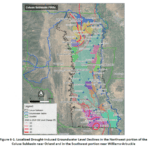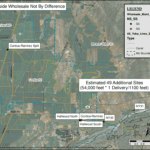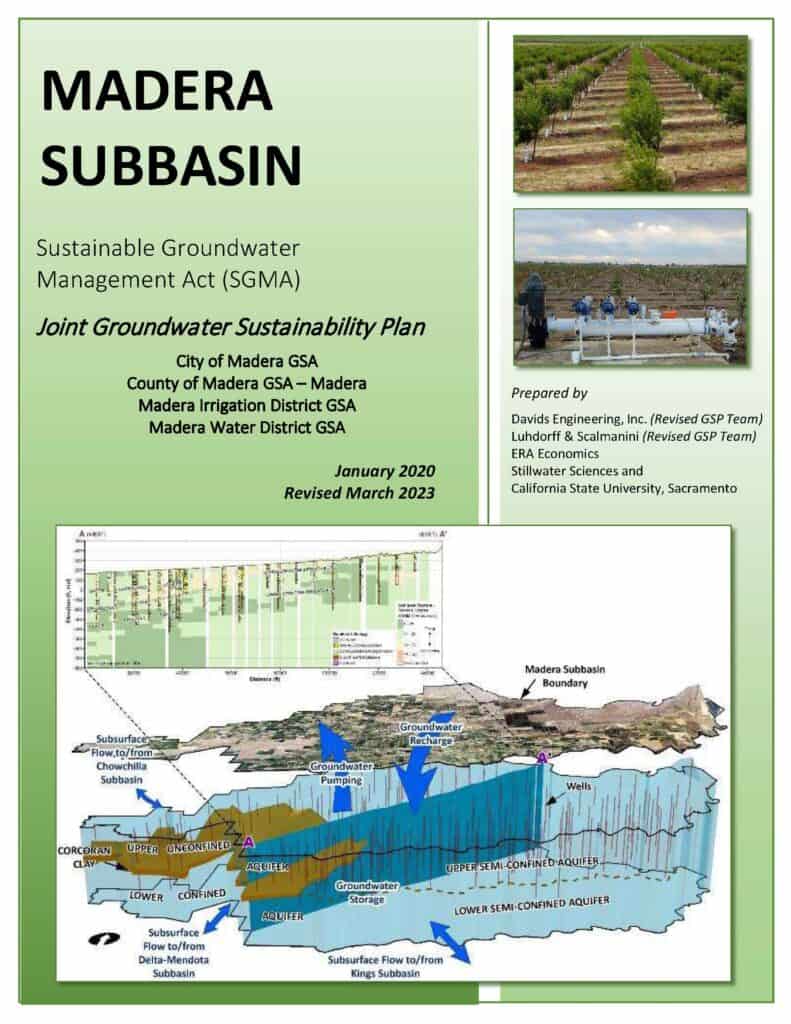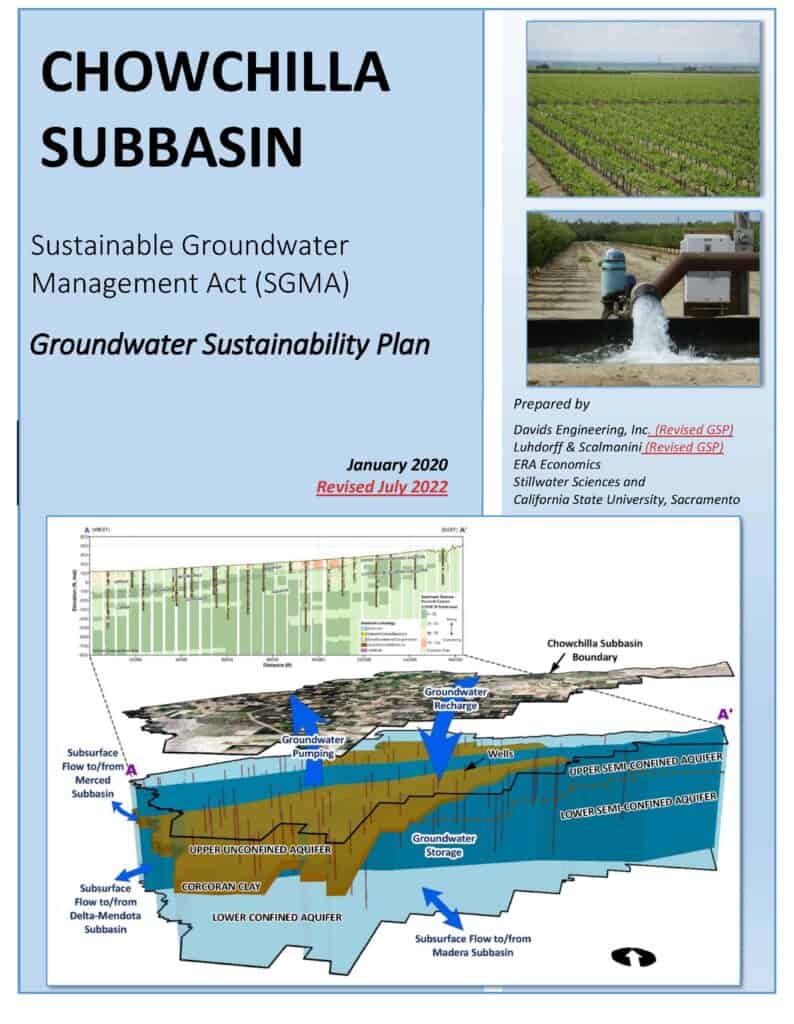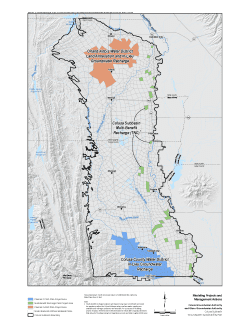Since its founding, Davids Engineering has become a leader in characterizing the relationship between land use, water use, and surface water processes. Understanding this relationship is at the core of understanding the impacts of all water users on the groundwater system, and in understanding how best to approach sustainable groundwater management.
Groundwater management efforts have long been a priority for the many water users and agencies that DE serves. The passage of the Sustainable Groundwater Management Act (SGMA) in 2014 has further heightened this focus statewide, as agencies must work toward achieving long-term groundwater sustainability.
Davids Engineering’s expert insights into the surface water system, together with our extensive project experience across California, have uniquely positioned the firm to respond to the many demands of sustainable groundwater management that are faced by water users and agencies in their response to SGMA.
We are dedicated to the idea that sustainability is best achieved through the dual goals of enhancing the productivity and profitability of the agricultural enterprise and improving environmental stewardship, including sustainable groundwater management.
We have supported, and continue to support, our clients in their sustainable groundwater management efforts in a number of ways:
Groundwater management efforts have long been a priority for the many water users and agencies that DE serves. The passage of the Sustainable Groundwater Management Act (SGMA) in 2014 has further heightened this focus statewide, as agencies must work toward achieving long-term groundwater sustainability.
Davids Engineering’s expert insights into the surface water system, together with our extensive project experience across California, have uniquely positioned the firm to respond to the many demands of sustainable groundwater management that are faced by water users and agencies in their response to SGMA.
We are dedicated to the idea that sustainability is best achieved through the dual goals of enhancing the productivity and profitability of the agricultural enterprise and improving environmental stewardship, including sustainable groundwater management.
We have supported, and continue to support, our clients in their sustainable groundwater management efforts in a number of ways:
Groundwater Data Management and Reporting Systems
Many and varied data types are required for preparing and implementing a GSP. For instance, geologic, hydrogeologic, topographic, soils, and groundwater data – including well information, groundwater levels, groundwater quality, subsidence, and pumping – are all required for establishing the hydrogeologic conceptual model and groundwater conditions of the subbasin. These data are also used together with land use, water use, meteorological, and streamflow data to quantify the subbasin water budget. DWR further requires maps, tables, and graphical summaries of these many data types in the GSP and annual reports. A well-designed data management system is capable of readily storing and managing these many data types.
Davids Engineering is experienced in navigating SGMA reporting requirements and devising tabular groundwater data management and reporting systems that are able to seamlessly integrate with the many systems and data types that GSAs must handle. Davids Engineering offers a wealth of data management capabilities that include streamlined data acquisition, data formatting, quality control and assurance, storage, and visualization and reporting. Our data management solutions tackle these many demands through custom-built platforms that are developed at a scope and scale suited to meet our clients’ needs. Our data management and reporting systems are also designed to port to other popular data systems as our clients’ needs evolve and expand.
Integrated Hydrologic Modeling
Effective water management demands powerful tools capable of characterizing the complex and nuanced interaction between surface water and groundwater in many basins. Davids Engineering has often developed or supported integrated hydrologic modeling efforts to characterize these systems. Building upon our expertise in land surface system modeling, Davids Engineering crafts the link between surface water models and groundwater models. We provide our clients with a more comprehensive and reliable understanding of how water has been used, is currently being used, and will be used into the future. This perspective is critical to effective and sustainable groundwater management.
Integrated hydrologic models that we have operated and supported include:
•DWR’s Integrated Water Flow Model (IWFM)
•California Central Valley Groundwater-Surface Water Simulation Model (C2VSim) application
•Sacramento Valley Groundwater-Surface Water Simulation Model (SVSim)
Integrated hydrologic models that we have operated and supported include:
•DWR’s Integrated Water Flow Model (IWFM)
•California Central Valley Groundwater-Surface Water Simulation Model (C2VSim) application
•Sacramento Valley Groundwater-Surface Water Simulation Model (SVSim)
Land Surface System Modeling
Water use in irrigated regions is substantially driven by land surface processes, such as cropping, irrigation systems, and water source availability and preferences. Davids Engineering’s extensive experience in characterizing land surface processes across California’s agricultural regions has led us to support numerous clients in implementing SGMA. Embedded in many projects is the development and application of modeling tools that can help to quantify historical water uses and water supplies and to project future water needs and water availability.
Tools that Davids Engineering typically uses to model the land surface layer include, detailed root zone water balance models, remotely-sensed surface energy balances, hydrologic and hydraulic models, and other tools for modeling hydrologic processes at the land surface.
Davids Engineering frequently creates root zone water balance models to quantify water that flows into and out of the root zone (the upper portion of the soil where water extraction by plant roots occurs). Root zone models are useful for tracking the portions of total crop water use that are derived from precipitation and irrigation, and the amount of water that percolates into the groundwater system. Typical approaches used by Davids Engineering include the Integrated Water Flow Model (IWFM) Demand Calculator (IDC), ET Demands, and others, including customized applications.
Davids Engineering also employs surface energy balance models to quantify crop consumptive water use from satellite imagery through a balance of net radiation, soil heat flux, sensible heat flux, and latent heat flux at the Earth’s surface. Typical approaches used by Davids Engineering include the SEBAL (Surface Energy Balance Algorithm for Land) and METRIC (Mapping EvapoTranspiration at high Resolution with Internalized Calibration) methods.
Tools that Davids Engineering typically uses to model the land surface layer include, detailed root zone water balance models, remotely-sensed surface energy balances, hydrologic and hydraulic models, and other tools for modeling hydrologic processes at the land surface.
Davids Engineering frequently creates root zone water balance models to quantify water that flows into and out of the root zone (the upper portion of the soil where water extraction by plant roots occurs). Root zone models are useful for tracking the portions of total crop water use that are derived from precipitation and irrigation, and the amount of water that percolates into the groundwater system. Typical approaches used by Davids Engineering include the Integrated Water Flow Model (IWFM) Demand Calculator (IDC), ET Demands, and others, including customized applications.
Davids Engineering also employs surface energy balance models to quantify crop consumptive water use from satellite imagery through a balance of net radiation, soil heat flux, sensible heat flux, and latent heat flux at the Earth’s surface. Typical approaches used by Davids Engineering include the SEBAL (Surface Energy Balance Algorithm for Land) and METRIC (Mapping EvapoTranspiration at high Resolution with Internalized Calibration) methods.
Groundwater Sustainability Plan (GSP) Preparation
The groundwater sustainability plan (GSP) is the foundation of SGMA compliance efforts in all basins designated as medium or high priority by the California Department of Water Resources. The GSP is the adaptive blueprint by which GSAs define the physical characteristics and groundwater conditions of their basin, identify the criteria and data that will be used to assess groundwater sustainability, and plan projects and management actions to maintain or achieve sustainability moving forward.
Davids Engineering has proven experience leading teams and partnering with others to provide the range of interdisciplinary technical capabilities that are needed to effectively and efficiently prepare SGMA-compliant GSPs.
Davids Engineering has proven experience leading teams and partnering with others to provide the range of interdisciplinary technical capabilities that are needed to effectively and efficiently prepare SGMA-compliant GSPs.
Groundwater Sustainability Agency (GSA) Support Services
Under SGMA, local agencies are tasked with forming Groundwater Sustainability Agencies (GSAs) that are responsible for developing and implementing a Groundwater Sustainability Plan (GSP) for their subbasins. GSAs operate at the local level to achieve sustainable groundwater management through many and diverse responsibilities, such as:
•Coordination with other GSAs and, in some cases, between multiple GSPs in a subbasin
•Stakeholder and public outreach and engagement
•Preparation and implementation of a GSP
•Development and implementation of a basin monitoring network
•Implementation of data management systems
•Preparation of GSP annual reports and periodic GSP evaluations
Davids Engineering has worked with many GSAs to provide services that support these needs.
•Coordination with other GSAs and, in some cases, between multiple GSPs in a subbasin
•Stakeholder and public outreach and engagement
•Preparation and implementation of a GSP
•Development and implementation of a basin monitoring network
•Implementation of data management systems
•Preparation of GSP annual reports and periodic GSP evaluations
Davids Engineering has worked with many GSAs to provide services that support these needs.
